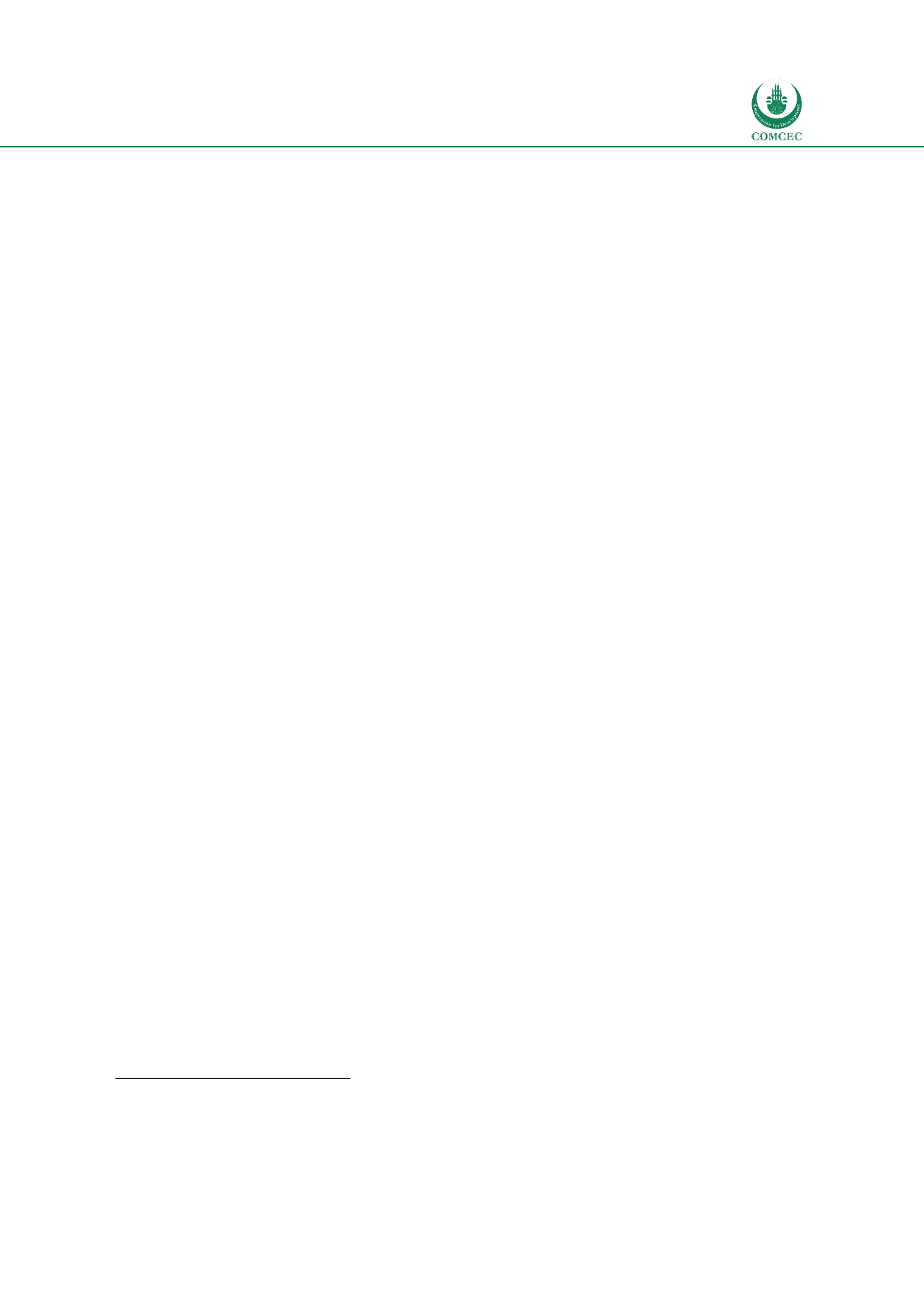

National and Global Islamic Financial Architecture:
Prolems and Possible Solutions for the OIC Member Countries
191
6.
Overview of the Islamic Financial Architectural Institutions:
Weaknesses and Prospects for Further Development
Based on the country case studies, this section will evaluate the status of the financial
architectural institutions and identify the gaps that can potentially inhibit the sound growth of
the Islamic financial industry. The statuses reveal the weaknesses and strengths of various
Islamic infrastructure institutions from different countries. The financial architectural issues
will be discussed under the headings of the seven key categories identified above (i.e., legal
infrastructure, financial system supervision and regulation, Shariah governance framework,
liquidity infrastructure, information infrastructure and transparency, consumer protection
architecture, and human capital and knowledge development framework).
The results are presented in three sections. First, the statuses of different architectural
institutions at the national levels are presented. Second, the overall rankings of each
infrastructure institution across different countries are evaluated. Finally, the positions of
international institutions in providing support to develop the infrastructure institutions are
presented.
6.1.
Infrastructural Institutions: Statuses at the National Levels
6.1.1.
Legal Infrastructure
As indicated, the status of different aspects of the legal infrastructure can be viewed in two
ways. First, the relative institutional statuses of individual counties are presented. Second, the
overall status of the institution across countries is discussed.
Supporting Financial Laws
The case studies show a variety of legal regimes under which Islamic financial sectors operate.
The first category is an Islamic legal system and all its financial laws and institutions support
the Islamic financial sector (Sudan).
65
Other countries have dual financial systems where
conventional and Islamic financial institutions operate side by side. Among these, some
countries have enacted separate laws for the Islamic finance sector (Malaysia, Oman). In a
third group of countries, the existing financial laws are adjusted to accommodate Islamic
finance (Bangladesh, Indonesia, Pakistan). Note that in case of Turkey, while the banking law
and capital markets law includes elements of Islamic finance, the insuance law does not. In a
fourth type, the central banking laws give authority to regulate different financial institutions
including Islamic ones. In these countries the regulators provide the bulk of the
legal/regulatory framework for the Islamic financial sector. In the last group of countries, there
are no specific provisions for Islamic finance in the finance laws but the regulators tolerate
Islamic financial institutions (Egypt, Saudi Arabia and Senegal).
65
Iran is the other country that has both an Islamic legal and financial system. While Saudi Arabia’s legal system is
Islamic, the financial sector has both Islamic and conventional components.
















